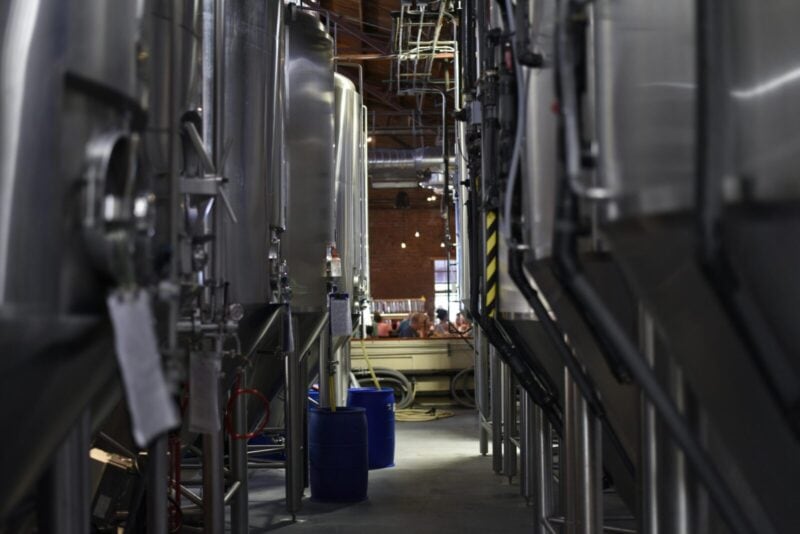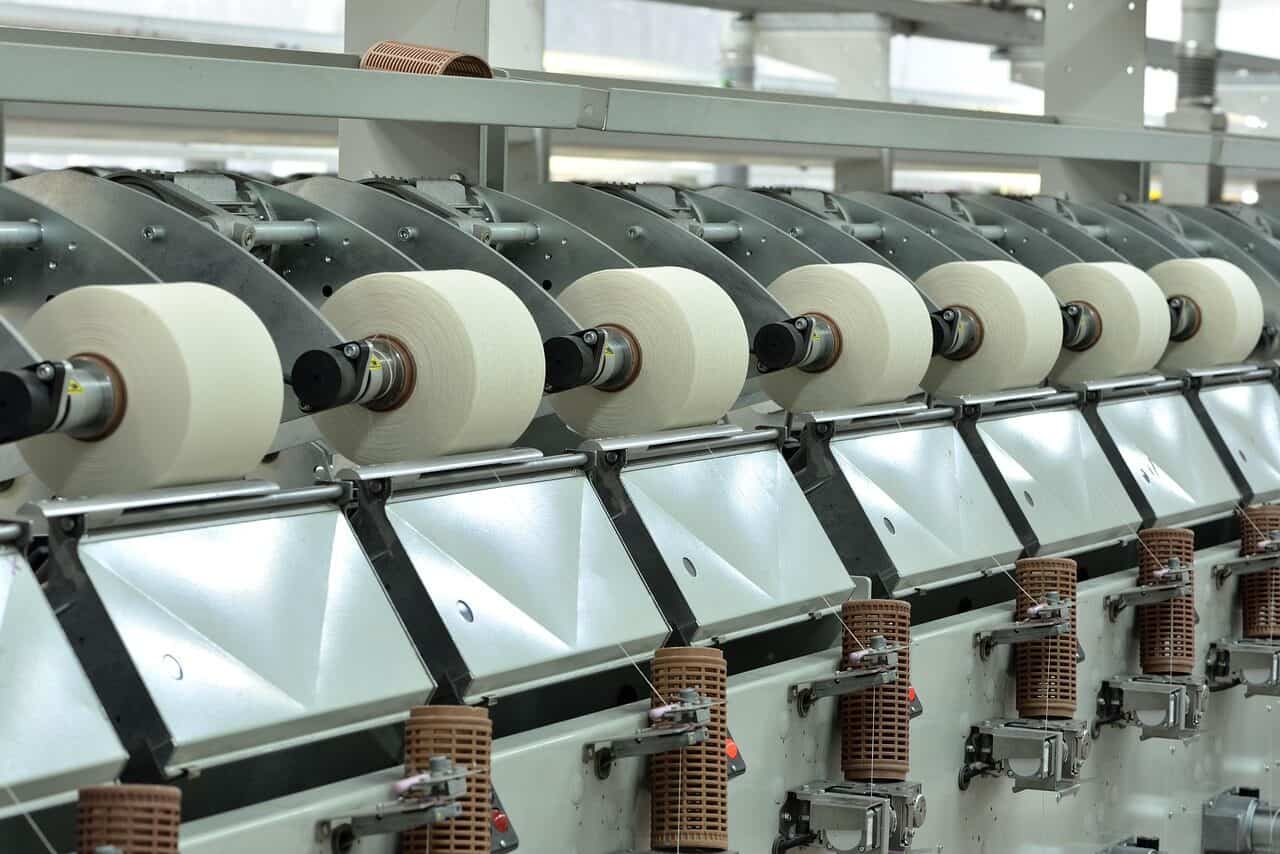Hacer galletas para otras empresas: Guía completa
¿Se ha preguntado alguna vez cómo tantas marcas, desde pequeñas cafeterías a grandes aerolíneas, crean sus propias galletas especiales sin tener un solo horno? La respuesta está en una estrategia empresarial inteligente que les da acceso a conocimientos de fabricación y producción a gran escala sin el enorme coste de construir su propia fábrica. Es lo que se denomina fabricación de equipos originales (OEM). Para cualquier empresa que desee crear su propio producto de galletas exclusivo, comprender el proceso de OEM es el primer paso hacia el éxito.
Esta guía será tu hoja de ruta completa, explicándote todo el recorrido desde una simple idea hasta un producto listo para las tiendas. Pasaremos por los retos de la producción, las alianzas y la planificación, proporcionándole los conocimientos prácticos necesarios para tomar decisiones inteligentes. Al final de este artículo, lo entenderás claramente:
- Ventajas de elegir el enfoque OEM.
- Paso a paso guía para crear su galleta única.
- Cómo encontrar y comprobar cuidadosamente al socio fabricante perfecto.
- Aspectos importantes a tener en cuenta para el control de calidad, la gestión de costes y el cumplimiento de la normativa.
- Nuevas tendencias que están cambiando el futuro de la industria galletera.
Comprender las galletas OEM
Para trabajar con éxito con fabricantes por contrato, es importante conocer las distintas opciones disponibles. Los términos OEM, ODM y marca blanca se utilizan a menudo como si significaran lo mismo, pero representan formas completamente distintas de crear productos. Elegir el camino correcto es una decisión estratégica importante que afectará a su nivel de control, inversión y grado de exclusividad de su producto. OEM es el camino para las marcas que quieren crear algo verdaderamente propio.
Definición de los modelos de producción
- OEM (fabricante de equipos originales): Se trata de una asociación en la que usted, la marca, proporciona una receta única y especificaciones detalladas a un fabricante. A continuación, la fábrica utiliza sus equipos y conocimientos para producir el producto únicamente para usted. Usted conserva la plena propiedad de la propiedad intelectual (PI), incluidas la receta y la fórmula. Este modelo ofrece el máximo nivel de personalización y exclusividad de la marca.
- ODM (Fabricante de Diseños Originales): En este modelo, el fabricante ya dispone de una colección de diseños y recetas de productos preelaborados. Usted elige un producto de su catálogo y puede solicitar pequeños cambios, como un ligero ajuste del sabor o una forma diferente. A continuación, usted aplica su propia marca. La propiedad intelectual del producto principal suele permanecer en manos del fabricante.
- Marca blanca: Es la opción más sencilla. Eliges una marca ya existente producto de la gama estándar de un fabricante y basta con poner la etiqueta de su marca en el envase. No hay cambios en el producto en sí. Ofrece la mayor rapidez de comercialización con la menor inversión inicial.

Para aclarar estas diferencias, considere la siguiente comparación:
| Característica | OEM (fabricante de equipos originales) | ODM (Fabricante de diseños originales) | Marca blanca |
| Diseño de productos | Personalizado, basado en la receta/IP exclusiva del cliente | Diseño existente del fabricante, se permiten pequeños retoques | Producto genérico del fabricante, sin cambios |
| Propiedad intelectual | Propiedad del cliente (la marca) | Suele ser propiedad del fabricante | Propiedad del fabricante |
| Singularidad y diferenciación | Alta | Bajo a medio | Bajo |
| Inversión inicial | Elevado (debido a I+D, posibles tasas de molde, ensayos) | Media (menores costes de I+D) | Muy bajo |
| Tiempo de comercialización | El más largo (6-12+ meses) | Media (3-6 meses) | Más rápido (1-3 meses) |
| Lo mejor para | Marcas que buscan un producto realmente único y emblemático con una fuerte ventaja competitiva. | Marcas que desean comercializar rápidamente un producto semipersonalizado sin una I+D exhaustiva. | Minoristas o marcas que necesitan llenar rápidamente una categoría de productos con un artículo probado. |
Ventajas estratégicas del OEM
Elegir la ruta de las galletas OEM es más que una decisión de producción; es un movimiento empresarial estratégico que ofrece ventajas significativas, permitiéndole competir eficazmente en un mercado saturado.
- Céntrese en las competencias empresariales básicas: Al externalizar la fabricación, libera recursos valiosos. Su equipo puede centrarse en lo que mejor sabe hacer: crear la marca, desarrollar estrategias de marketing, gestionar los canales de venta y establecer relaciones con los clientes. Deje las complejidades de la producción, la gestión de la cadena de suministro y la garantía de calidad en manos de un socio especializado.
- Reducción de la inversión de capital: Construir, equipar y dotar de personal una planta de fabricación de productos alimentarios requiere una enorme inversión de capital, que a menudo asciende a millones de dólares. El modelo OEM le permite prescindir de todo esto, convirtiendo un enorme gasto de capital en un gasto operativo predecible. Esto reduce la barrera de entrada y disminuye significativamente el riesgo financiero.
- Acceso a conocimientos y tecnología: Un buen socio OEM aporta años, o incluso décadas, de experiencia. Sus equipos de investigación y desarrollo pueden tener un valor incalculable. A menudo trabajamos con clientes que tienen una receta casera maravillosa; nuestros científicos alimentarios y panaderos les ayudan a mejorarla para convertirla en una fórmula excelente y escalable que mantenga su sabor y textura a través de la producción en masa. Obtendrá acceso inmediato a tecnología punta de mezclado, horneado y envasado que, de otro modo, sería inasequible.
- Escalabilidad y flexibilidad: La demanda del mercado rara vez es estática. Con un socio OEM, puede aumentar fácilmente la producción durante las temporadas altas o reducirla en los periodos de menor actividad. No está limitado por la capacidad fija de su propia fábrica. Esta flexibilidad permite a su empresa responder mejor a los cambios del mercado sin el riesgo de infrautilizar los activos o de no poder hacer frente a un aumento de los pedidos.
- Mayor rapidez de comercialización: Aunque el desarrollo de un producto a medida lleva más tiempo que el de una marca de distribuidor, el proceso OEM es mucho más rápido y menos arriesgado que construir una planta de producción desde cero. Un fabricante experimentado tiene procesos establecidos, relaciones con proveedores y conocimientos normativos, lo que agiliza el proceso desde el concepto hasta el consumidor.
El proceso de producción en 7 etapas

Empezar un proyecto de galletas OEM puede parecer abrumador, pero puede dividirse en un proceso lógico, paso a paso. Como fabricantes, guiamos a nuestros socios a través de este viaje cada día. Comprender estos siete pasos clave le ayudará a gestionar su proyecto con eficacia, establecer plazos realistas y comunicarse claramente con su socio de producción.
Paso 1: Ideación y receta
Esta es la fase de cimentación en la que su visión toma forma. Empieza con una idea clara del producto que quieres crear. Define tu público objetivo, identifica tu nicho de mercado y establece tu propuesta única de venta (USP). ¿Su galleta es ecológica, sin gluten, vegana, apta para celíacos o presenta una combinación de sabores única? Una vez que el concepto esté claro, debe desarrollar la receta principal. Esta receta inicial no tiene por qué ser perfecta para la producción en masa, pero debe ser un punto de partida sólido. El resultado más importante de esta fase es una detallada hoja de especificaciones del producto. Este documento es el anteproyecto de su producto y debe incluir los porcentajes de ingredientes deseados, la información nutricional deseada, el perfil de textura (crujiente, blando, masticable, etc.), las dimensiones físicas y el tiempo de conservación previsto.
Paso 2: Búsqueda y selección de fabricantes
Con el proyecto de producto en la mano, empieza la búsqueda del socio adecuado. Investigue posibles fabricantes que tengan experiencia con su tipo de producto. Asista a ferias, busque en directorios del sector y pida referencias. Una vez que tenga una lista de preseleccionados, envíe una solicitud de información (RFI) para evaluar sus capacidades y su interés inicial. Antes de compartir su receta patentada, es absolutamente esencial que el socio potencial firme un Acuerdo de No Divulgación (NDA). Este documento legal protege su propiedad intelectual y es un primer paso estándar en cualquier relación profesional OEM.
Etapa 3: Muestreo y perfeccionamiento
Aquí es donde su receta cobra vida. Presentará su hoja de especificaciones y su receta al equipo de investigación y desarrollo del fabricante. Ellos crearán primero una muestra en su laboratorio. Esta muestra inicial pretende reproducir su receta a pequeña escala. Es probable que no salga perfecta a la primera. Usted proporcionará información detallada sobre el sabor, la textura, el aroma y el aspecto. Se trata de un proceso iterativo que puede requerir varias rondas de ajustes. El equipo del fabricante ofrecerá sugerencias para mejorar la escalabilidad o la estabilidad. El objetivo es llegar a una "muestra dorada", una única galleta que represente a la perfección su visión y que cuente con su aprobación formal. Esta muestra dorada se convierte en la norma no negociable con la que se medirá toda la producción en masa futura.
Paso 4: Diseño del envase y aprovisionamiento
Al mismo tiempo que el proceso de muestreo, debe desarrollar su envase. Esto implica dos componentes clave: el diseño creativo y las especificaciones técnicas. La marca y las ilustraciones no solo deben ser visualmente atractivas, sino también cumplir todas las normas de etiquetado de alimentos de los mercados de destino (por ejemplo, listas de ingredientes, advertencias sobre alérgenos, paneles nutricionales). Desde el punto de vista técnico, debe decidir el envase primario (la película o envoltorio que toca la galleta), el envase secundario (la caja o bolsa) y el envase terciario (la caja de envío). Su socio OEM puede ser un recurso valioso a este respecto, ya que suele recomendarle proveedores de envasado de confianza y aconsejarle sobre los materiales que mejor funcionan con sus líneas de envasado automatizadas.
Paso 5: Cálculo de costes y acuerdo comercial
Una vez aprobada la muestra dorada y ultimadas las especificaciones de envasado, el fabricante puede proporcionar un precio final exacto por unidad. Este precio se basará en los costes de los ingredientes, el tiempo de procesamiento, la mano de obra, el envasado y los gastos generales. Una vez confirmado el precio, se negociarán las condiciones comerciales clave. La más importante es la cantidad mínima de pedido (MOQ), que es el pedido más pequeño que el fabricante producirá en una sola tirada. Otras condiciones son el calendario de pagos (por ejemplo, 50% por adelantado, 50% en el momento del envío), los plazos de producción y la propiedad de cualquier herramienta personalizada (como un molde exclusivo para galletas). Todos estos detalles se recogen en un Acuerdo de Fabricación formal, un contrato legalmente vinculante que rige la asociación.
Paso 6: Producción piloto y control de calidad
Antes de comprometerse a realizar un pedido a gran escala, una prueba piloto es un paso fundamental para reducir riesgos. Consiste en producir un pequeño lote de su producto (normalmente entre unos cientos y unos miles de unidades) en la línea de producción real a gran escala. El objetivo es garantizar que el producto pueda fabricarse de forma homogénea y con la misma calidad que la muestra dorada a alta velocidad. Es habitual que las galletas de una prueba piloto se horneen de forma ligeramente distinta que en un horno de laboratorio. A menudo descubrimos que bastan pequeños ajustes, como un cambio de temperatura de 5 °C o un cambio de 30 segundos en el tiempo de horneado, para igualar perfectamente la muestra dorada. Durante esta prueba, usted y el fabricante finalizará el Control de Calidad (QC), es decir, los controles específicos y cuantificables que se realizan durante la producción para garantizar que cada galleta cumple la norma.
Paso 7: Producción y logística a gran escala
Una vez completada con éxito la prueba piloto, estará listo para su primera producción en serie. Emitirá una Orden de Compra (OC) formal basada en los términos de su Acuerdo de Fabricación. A continuación, el fabricante programará la tirada, comprará todas las materias primas y embalajes y producirá el pedido. A medida que la producción se acerca a su fin, usted debe coordinar la logística. Esto implica organizar el transporte de los productos acabados desde la fábrica a su almacén, a las instalaciones de un distribuidor o a un proveedor logístico externo (3PL). Una comunicación clara durante este último paso es esencial para garantizar una transición fluida de la producción a su cadena de suministro.
Selección de socios OEM
La elección de su fabricante OEM es posiblemente la decisión más importante que tomará en todo este proceso. Un gran socio es algo más que un proveedor; es una extensión de su equipo, un colaborador comprometido con su éxito. Un mal socio puede provocar problemas de calidad, incumplimiento de plazos y daños a la marca. El proceso de evaluación debe ir mucho más allá de una simple comparación de precios.

Más allá del precio
Aunque el coste siempre es un factor, el presupuesto más barato rara vez es el mejor valor. Un precio bajo puede ocultar a menudo problemas en los sistemas de calidad, una comunicación deficiente o la falta de asistencia técnica. Una asociación construida sobre una base de fiabilidad, confianza y normas de calidad compartidas proporcionará un retorno de la inversión mucho mayor a largo plazo. Concéntrese en encontrar un socio que demuestre un profundo conocimiento de su visión del producto y disponga de los sistemas necesarios para ejecutarla a la perfección.
La siguiente lista de comprobación proporciona un marco sólido para su proceso de diligencia debida, ayudándole a evaluar sistemáticamente a los socios potenciales.
| Categoría | Pregunta clave | En qué fijarse (banderas verdes) | Banderas rojas |
| Certificaciones y calidad | ¿Poseen las certificaciones de seguridad alimentaria pertinentes? | Certificaciones reconocidas por la GFSI (BRC, SQF, FSSC 22000), un plan APPCC bien documentado, sistemas de trazabilidad claros y unas instalaciones limpias y organizadas durante una auditoría in situ. | Certificaciones caducadas o inexistentes, incapacidad para proporcionar documentación de calidad, una planta de producción desordenada o desorganizada y respuestas vagas sobre su proceso de control de calidad. |
| Experiencia y conocimientos | ¿Han producido antes un tipo de galleta similar? | Una cartera de productos de complejidad similar (por ejemplo, recubiertos, rellenos, sin gluten), un equipo de I+D experimentado que formule preguntas perspicaces y referencias de clientes positivas y verificables. | Sin experiencia directa con sus ingredientes o procesos específicos, con un enfoque único y un equipo de I+D que parece poco comprometido o inexperto. |
| Capacidad de producción y MOQ | ¿Puede su capacidad crecer con su marca? ¿Es factible su MOQ para su lanzamiento? | Comunicación clara sobre la disponibilidad actual de la línea y la capacidad total, opciones flexibles de MOQ o una estructura de precios escalonada, y una clara disposición a discutir sus planes de crecimiento. | Un MOQ excesivamente alto para un nuevo producto, respuestas evasivas sobre su calendario de producción o limitaciones de capacidad, e inflexibilidad en las negociaciones. |
| Comunicación y apoyo | ¿Disponen de un punto de contacto específico? ¿Son receptivos y transparentes? | Un gestor de cuentas o jefe de proyecto dedicado, comunicación proactiva, respuestas por correo electrónico claras y puntuales, y transparencia a la hora de hablar de posibles retos o limitaciones. | Respuestas lentas o incoherentes, cambios frecuentes de persona de contacto, barreras lingüísticas que impiden un debate técnico claro y tendencia a prometer más de la cuenta. |
| Transparencia y costes | ¿Su estructura de precios es clara, detallada y lo incluye todo? | Un desglose detallado de los costes (ingredientes, mano de obra, envasado, gastos generales, beneficios), una explicación clara de todos los posibles gastos (por ejemplo, I+D, utillaje) y la ausencia de cargos ocultos. | Presupuestos imprecisos y a tanto alzado, falta de voluntad para explicar los componentes de los costes y honorarios inesperados que aparecen tarde en el proceso de negociación. |
Aplicaciones industriales
El poder de la producción de galletas OEM se extiende a una gama sorprendentemente diversa de sectores. Las empresas aprovechan las galletas personalizadas no sólo como producto alimenticio, sino como una poderosa herramienta de marca, experiencia del cliente y diferenciación en el mercado. Conocer estas aplicaciones puede inspirarle nuevas ideas para su propia marca.
El sector aéreo y de viajes
Para las aerolíneas, el tentempié a bordo es un punto de contacto clave con millones de pasajeros. OEM les permite ir más allá de las opciones genéricas y servir galletas personalizadas que refuercen su identidad de marca. Trabajamos con las aerolíneas para desarrollar aperitivos que no sólo sean sabrosos, sino que también satisfagan necesidades logísticas específicas, como tener una larga vida útil y un envase resistente. Además, el OEM es fundamental para crear galletas que se adapten a las restricciones dietéticas habituales entre los viajeros, con fórmulas especializadas desarrolladas para las condiciones a 30.000 pies de altura, donde la percepción del sabor puede cambiar.
Hostelería: hoteles y cafeterías
En el competitivo sector de la hostelería, los pequeños detalles marcan una gran diferencia. Un hotel de lujo puede mejorar la experiencia de sus huéspedes ofreciendo una galleta de bienvenida única y personalizada en cada habitación. Una cafetería boutique puede fidelizar a sus clientes sirviendo una galleta exclusiva que complemente a la perfección su mezcla de café, un producto que los clientes no puedan conseguir en ningún otro sitio. Esta estrategia transforma un simple capricho en una parte memorable de la experiencia de marca. Los datos del sector lo corroboran; por ejemplo, un informe sobre hostelería de 2022 señalaba que los servicios personalizados en la habitación, como una galleta personalizada, pueden aumentar la satisfacción de los clientes hasta en un 15%.
Regalos de empresa y marca
Los materiales físicos de marketing pueden dejar una impresión duradera. Las empresas recurren cada vez más a las galletas OEM personalizadas con fines de branding corporativo. Esto puede ir desde elegantes galletas con el logotipo grabado que se distribuyen en ferias y conferencias hasta elaborados surtidos de galletas con sabores personalizados que se envían como regalo navideño a clientes y empleados clave. Es una forma elegante y eficaz de mantener una marca en primer plano.

Comercio minorista y ultramarinos
El sector minorista de la alimentación es quizá el mayor escenario para las galletas OEM. Facilita la creación de una línea de marca propia o de marca de la tienda de un supermercado, lo que permite al minorista competir directamente con las marcas nacionales en calidad y exclusividad, no sólo en precio. También es el principal facilitador de innumerables marcas especializadas que centrarse en tendencias sanitarias específicas como los productos ceto, hiperproteicos, veganos o "sin gluten". Estas marcas pueden innovar y captar cuota de mercado centrándose en sus fórmulas únicas y en el marketing, sin los inmensos gastos generales de poseer instalaciones de producción.
El futuro de las galletas OEM
La industria galletera, como todo el sector alimentario, está en constante evolución. Las preferencias de los consumidores, los avances tecnológicos y la dinámica de la cadena de suministro global están remodelando continuamente el panorama. Para las marcas que se plantean un proyecto de galletas OEM, alinearse con estas tendencias futuras no sólo es ventajoso, sino esencial para la relevancia y el éxito a largo plazo. Un socio OEM con visión de futuro no sólo será consciente de estas tendencias, sino que también tendrá la capacidad de ayudarle a sacar provecho de ellas.
| Tendencia | Descripción | Implicaciones para las marcas |
| Salud y bienestar | Una fuerte tendencia del consumidor hacia ingredientes funcionales (proteínas, fibra), productos "sin" (sin gluten, sin azúcar, sin lácteos) y etiquetas de ingredientes limpias y sencillas. | Se trata de una gran oportunidad para crear productos especializados de alto valor. Requiere asociarse con un fabricante que tenga experiencia demostrada y líneas segregadas para manipular alérgenos e ingredientes especializados. |
| Sostenibilidad | Creciente demanda de ingredientes de origen ético (por ejemplo, aceite de palma sostenible certificado por la RSPO, cacao de comercio justo) y un impulso significativo hacia envases ecológicos, reciclables o compostables. | La sostenibilidad es ahora un diferenciador clave de marca y una expectativa fundamental para muchos consumidores. Debe trabajar con fabricantes que tengan una política de sostenibilidad sólida y puedan ofrecer transparencia en la cadena de suministro. |
| Personalización y "exclusividad | Alejarse de los sabores estándar. Los consumidores buscan perfiles de sabor únicos, locales o exóticos (por ejemplo, yuzu, ube, chocolate con chile) que creen una experiencia de producto única e "Instagrammable". | El modelo OEM se adapta perfectamente a este nivel de innovación. El éxito depende de asociarse con un fabricante cuyo equipo de I+D sea creativo, ágil y entusiasta a la hora de experimentar con ingredientes nuevos e inusuales. |
| Tecnología y automatización | La integración de tecnología avanzada como la IA y la visión artificial para mejorar el control de calidad, así como una mayor automatización en la mezcla y el envasado para lograr una mayor consistencia y eficiencia. | Esta tendencia conduce a productos de mayor calidad, menos residuos y costes potencialmente más bajos a largo plazo. Cuando investigue a sus socios, pregúnteles por la tecnología que utilizan en sus líneas de producción. |
Tendencias clave
La galleta "mejor para ti" ya no es un nicho de mercado. Estamos asistiendo a una explosión de peticiones de galletas enriquecidas con proteínas vegetales, ricas en fibra procedente de ingredientes como la avena y los cereales antiguos, y endulzadas con alternativas naturales de bajo índice glucémico al azúcar refinado. El reto y la oportunidad residen en alcanzar estos objetivos nutricionales sin comprometer el sabor indulgente y la textura satisfactoria que los consumidores esperan de una galleta.
Las migas ecoconscientes reflejan un profundo cambio en los valores del consumidor. La atención a la sostenibilidad se extiende ahora a cada parte del producto. Esto significa examinar con lupa el origen de cada ingrediente y revolucionar el envasado. La industria está abandonando rápidamente las bandejas de plástico de un solo uso y los films no reciclables en favor de soluciones como el cartón con certificación FSC, los plásticos monomateriales totalmente reciclables e incluso los films compostables de nueva generación.
La Revolución de los Sabores es una respuesta directa a un paladar más globalizado y aventurero. La vainilla y el chocolate estándar son ahora sólo el punto de partida. Estamos colaborando con marcas para crear galletas con perfiles de sabor complejos y sofisticados, desde notas florales y botánicas como lavanda y rosa hasta combinaciones saladas y picantes. Esta tendencia consiste en crear una experiencia sensorial memorable que cuente una historia y distinga a una marca.
Construir su imperio galletero
El viaje hacia la producción de galletas OEM, aunque minucioso, es un camino bien recorrido y probado hacia el éxito en el mercado. Es una poderosa herramienta estratégica que permite a marcas de todos los tamaños lanzar productos únicos y de alta calidad sin la carga de la fabricación. Transformando la visión de un producto en un proyecto claro, seleccionando cuidadosamente a un socio que comparta esa visión y navegando por el proceso de producción con cuidado, se puede competir eficazmente con los nombres más grandes de la industria.
El proceso depende de algunos principios básicos: una identidad clara del producto, un marco jurídico y comercial sólido y, lo que es más importante, una verdadera asociación de colaboración. Su fabricante debe ser algo más que un proveedor de servicios: debe ser un asesor de confianza, un experto técnico y un copiloto en su viaje. Siguiendo los pasos descritos en esta guía -desde el desarrollo inicial del concepto y la receta, pasando por el examen crítico y la selección de su fabricante, hasta las fases finales de producción y logística- estará dotando a su marca de los conocimientos necesarios para triunfar.
El modelo OEM no es un mero proceso de fabricación; es una alianza estratégica. Es el motor que puede convertir la visión única de una marca en una realidad tangible y deliciosa, lista para ser disfrutada por consumidores de todo el mundo. Puede que su imperio galletero no se construya con sus propios ladrillos y cemento, pero sí sobre los sólidos cimientos de una asociación OEM inteligente y estratégica.
Preguntas frecuentes
¿Qué es una cantidad mínima de pedido realista?
Esta es una de las preguntas más frecuentes, y la respuesta varía mucho según el fabricante y la complejidad del producto. Para una simple galleta de marca blanca, las cantidades máximas de producción pueden ser relativamente bajas. Sin embargo, en el caso de una galleta OEM totalmente personalizada que requiera ingredientes exclusivos o configuraciones de línea específicas, las cantidades mínimas de producción pueden oscilar entre 10.000 y 50.000 unidades por tirada de producción. Los fabricantes a gran escala y altamente automatizados pueden tener cantidades mínimas de producción aún mayores. Hable siempre de ello al principio del proceso de selección.
¿A quién pertenece la receta en un acuerdo OEM?
En una verdadera asociación OEM, usted, el cliente, conserva 100% la propiedad de su propiedad intelectual, que es su receta y formulación únicas. Este es un principio fundamental del OEM. Esta propiedad debe indicarse explícitamente en el acuerdo de confidencialidad que se firma al inicio de la relación y reforzarse en el acuerdo final de fabricación. El fabricante está contratado para producir su receta exclusivamente para usted y no puede utilizarla para ningún otro cliente.
¿Cuánto dura todo el proceso de OEM?
Un plazo realista desde la idea inicial hasta la entrega del primer envío de producto acabado suele ser de 6 a 12 meses. Este plazo puede desglosarse de la siguiente manera: desarrollo y finalización de la receta (1-3 meses), búsqueda y selección de fabricantes (1-2 meses), ciclos de muestreo y perfeccionamiento (1-2 meses), diseño y búsqueda de envases (1-2 meses) y plazo de entrega de la primera producción completa (2-3 meses). El plazo puede ser más rápido si la receta es sencilla y más lento si es compleja o requiere ingredientes exclusivos con plazos de entrega largos.
¿Puedo utilizar un ingrediente específico y único?
En general, sí. Esta es una de las principales ventajas del modelo OEM. Si tiene un ingrediente patentado o especial que es esencial para la identidad de su producto, puede suministrárselo al fabricante. Sin embargo, el fabricante tendrá que aprobar el ingrediente. Realizará comprobaciones para asegurarse de que es seguro para los alimentos, estable y compatible con su equipo de procesamiento. Tenga en cuenta que el uso de un ingrediente único puede repercutir en el coste final por unidad, y que usted será responsable de garantizar un suministro constante de ese ingrediente a la fábrica.
- FDA - Directrices BPF para la fabricación de alimentos https://www.fda.gov/
- BRCGS - Normas mundiales de seguridad alimentaria https://www.brcgs.com/
- ISO 22000 - Sistemas de gestión de la seguridad alimentaria https://www.iso.org/
- FSSC 22000 - Certificación del sistema de seguridad alimentaria https://www.fssc22000.com/
- NSF International - Comparación de la certificación GFSI https://www.nsf.org/
- Instituto SQF - Programa de Calidad Alimentaria Segura https://www.sqfi.com/
- Wikipedia - Buenas prácticas de fabricación https://en.wikipedia.org/wiki/Good_manufacturing_practice
- Registrar Corp - Normas de seguridad alimentaria https://www.registrarcorp.com/
- SlideShare - Control de calidad en la fabricación de alimentos https://www.slideshare.net/
- ScienceDirect - Investigación en fabricación de alimentos https://www.sciencedirect.com/










